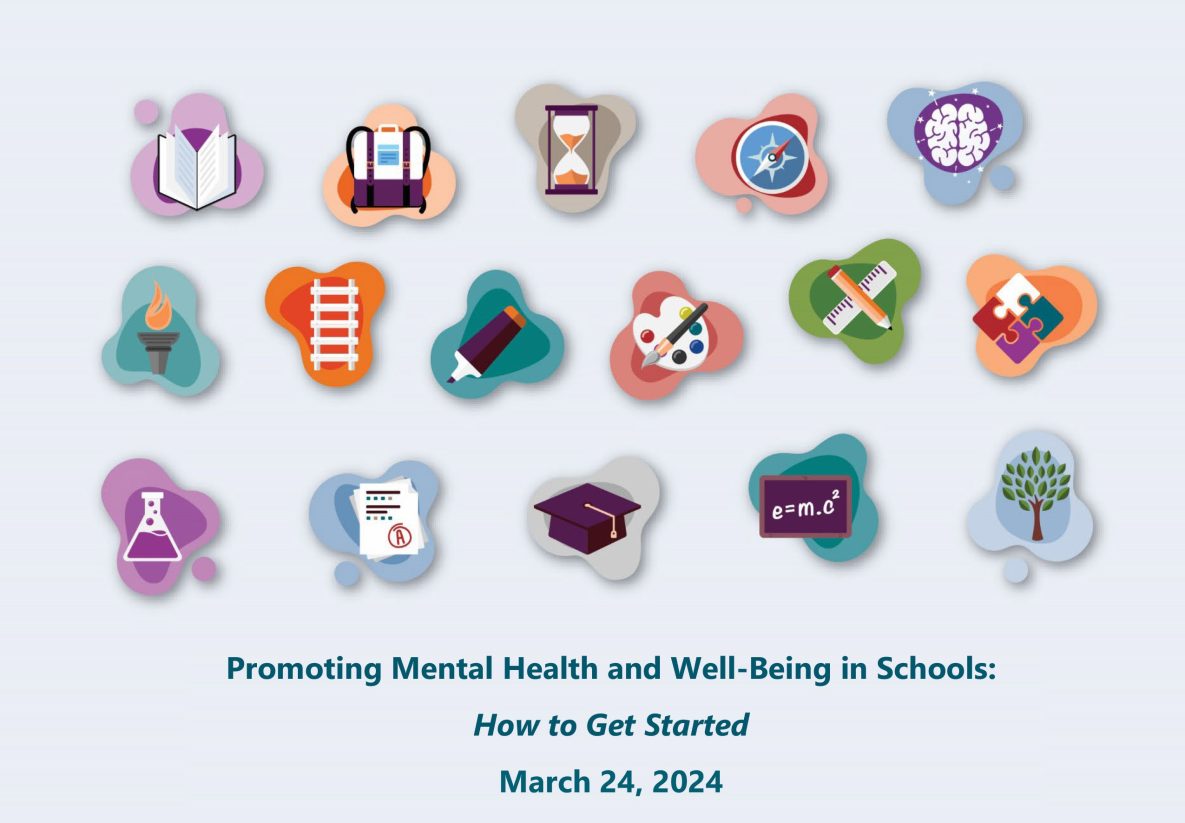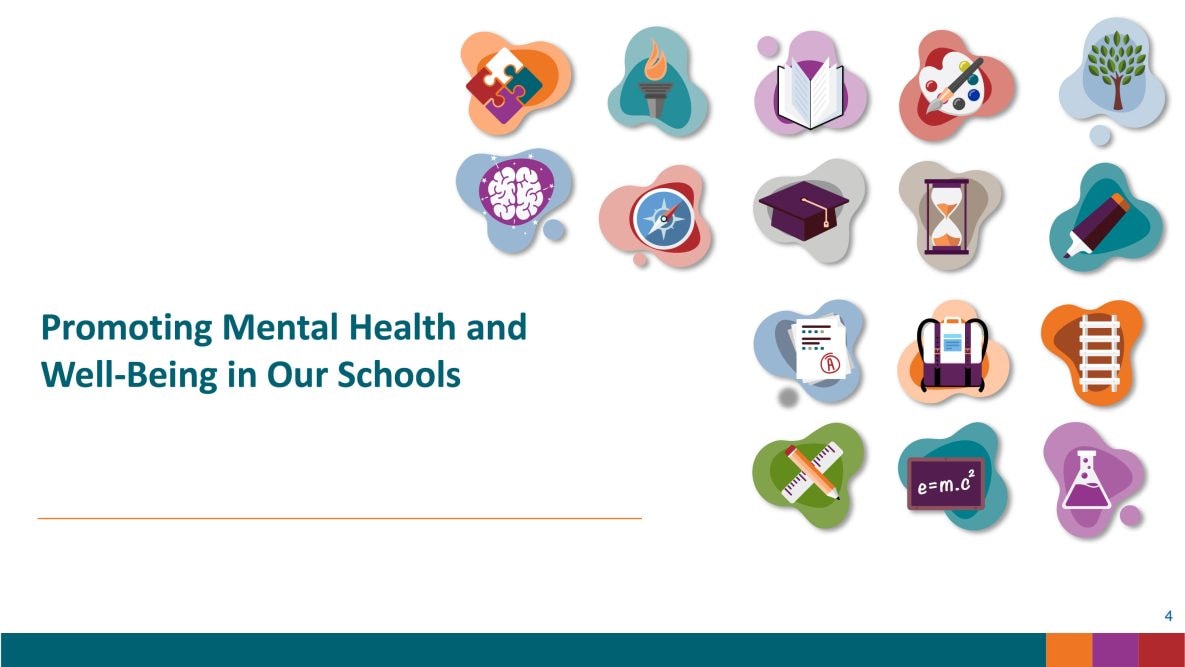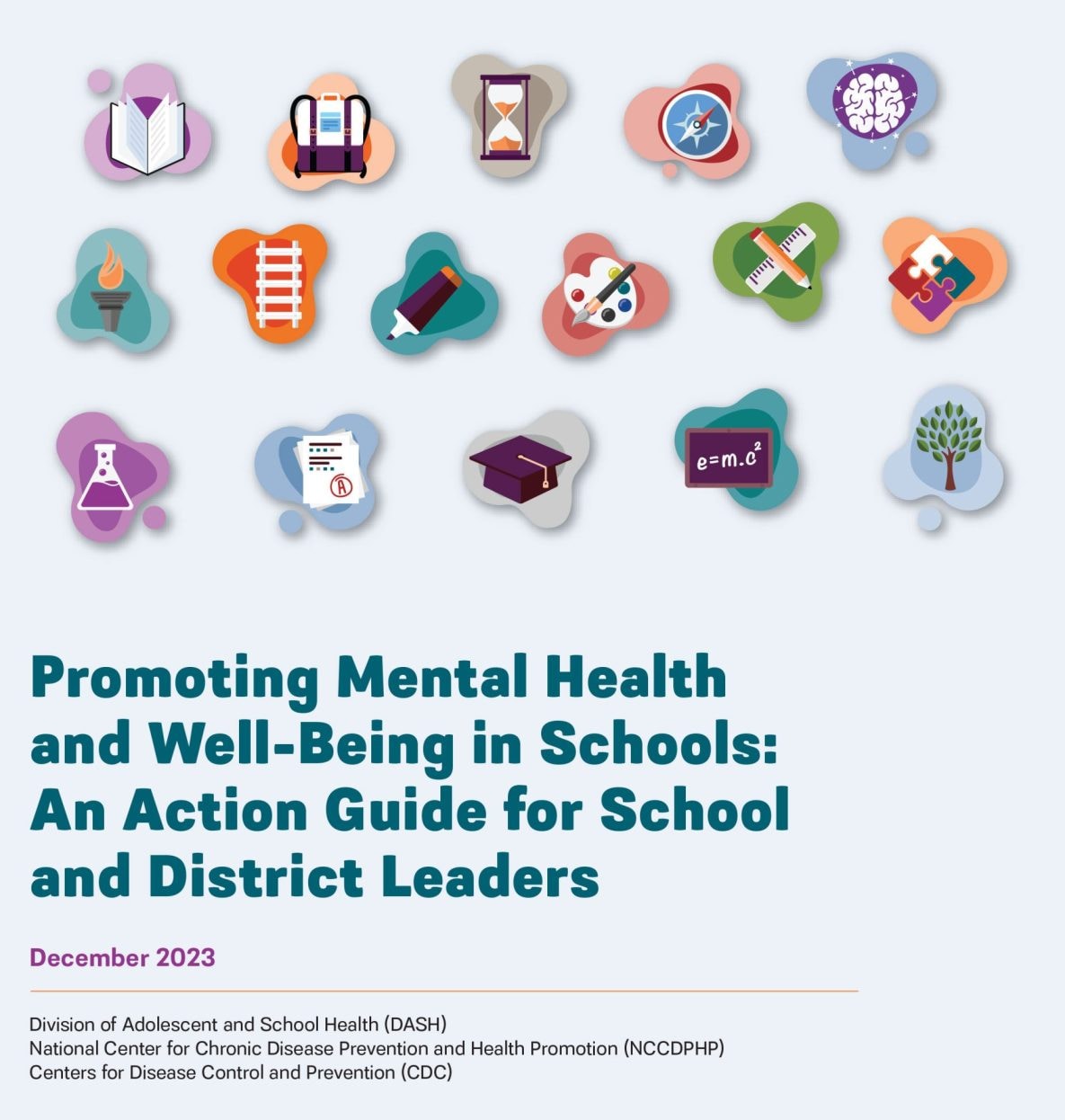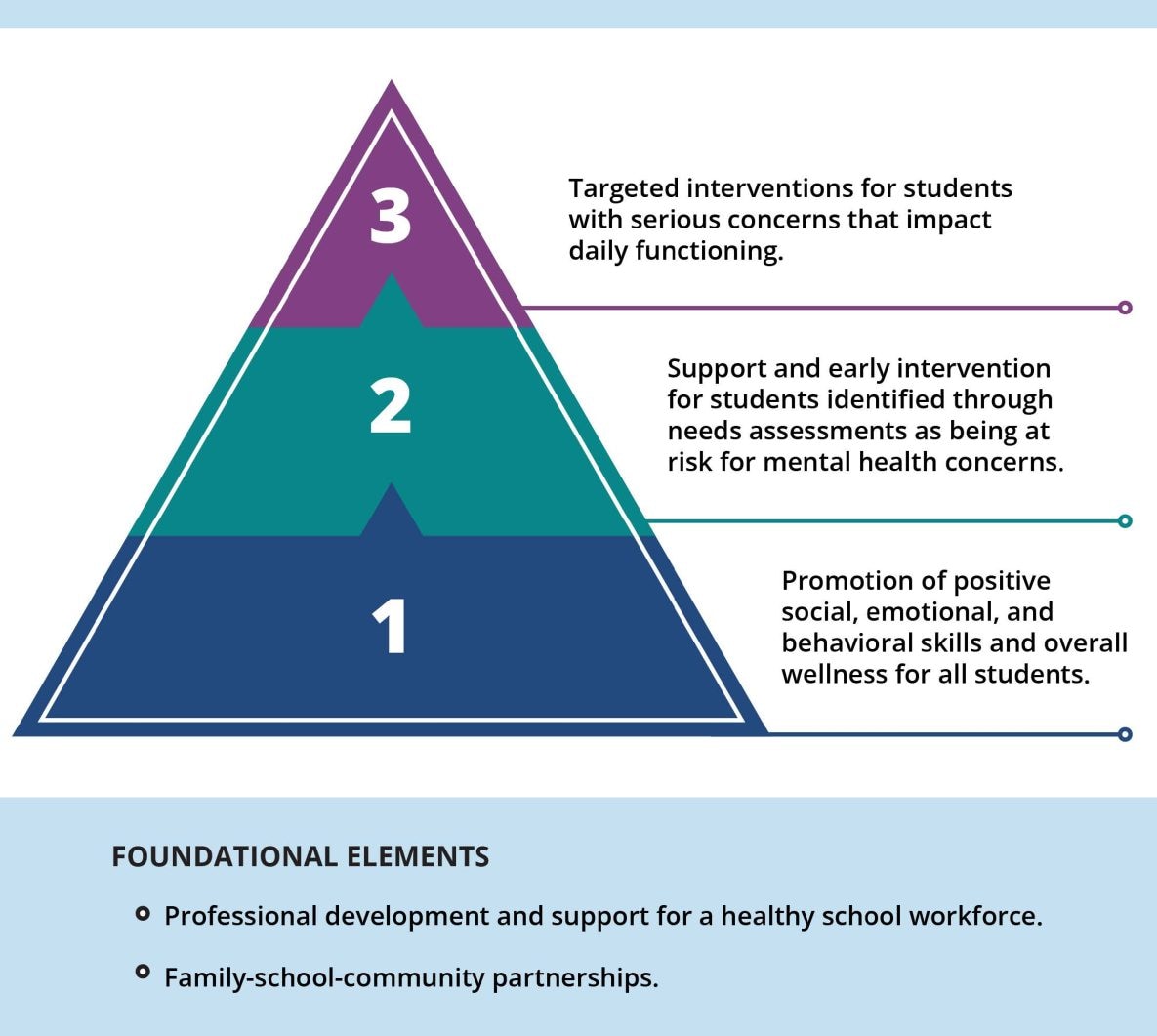Promoting Mental Health and Well-Being in Schools
An Action Guide for School and District Leaders

At a Glance
Schools are prioritizing students’ mental health, and there are many tools and resources to choose from. CDC created this action guide as a place to start. It can help school and district leaders build on what they are already doing to promote students’ mental health and find new strategies to fill in gaps.
The action guide describes six in-school strategies that are proven to promote and support mental health and well-being. For each strategy, the guide also describes approaches, or specific ways to put the strategy into action, and examples of evidence-based policies, programs, and practices.
Audience
School and district leaders of kindergarten through 12th-grade schools (K–12), including principals and leaders of student support teams.
Goal
Provide school and district leaders with strategies, approaches, and practices that can improve students’ mental health.
CDC has identified six school-based strategies and associated approaches that can help prevent mental health problems and promote positive behavioral and mental health of students.
Strategy
Strategy
Strategy
Approach
Approach
Approach
Strategy
Why Schools?
Schools help promote the mental health and well-being of students through education, prevention, and early intervention efforts. They provide an opportunity to reach a large number of youth with strategies that can lessen the impact of negative experiences and improve students’ health and well-being.
- Schools can establish safe and supportive environments.
- Schools can connect students to caring adults and encourage positive peer relationships.
- Schools can give students mental health support and link them and their families to community behavioral and mental health services.
- Schools that promote student mental health and well-being can improve classroom behavior, school engagement, and peer relationships. These factors are connected to academic success.
Tools to Get Started
The tools below were created for school and district leaders and mental health support teams to help prioritize strategies and approaches, create a plan to put them in place, and communicate the plan with key partners.

This resource [PDF – 2 MB] provides practical tools designed to help you 1) Reflect on what your school or district is already doing to promote mental health and well-being, 2) Prioritize strategies and approaches from the Action Guide to fill gaps and strengthen what is already in place, and 3) Plan for Action to implement the strategies and approaches.

The slides included in this presentation template [PPT – 9 MB] can be adapted and used to help you communicate to key partners (e.g. school staff, district administrators, school boards, parent groups) about your plans for implementing strategies and approaches from the Action Guide.
Additional Resources
Some of the strategies and approaches in this action guide may also improve other important health outcomes, such as experiences of violence and suicide.
CDC has several Resources for Action for preventing violence.

